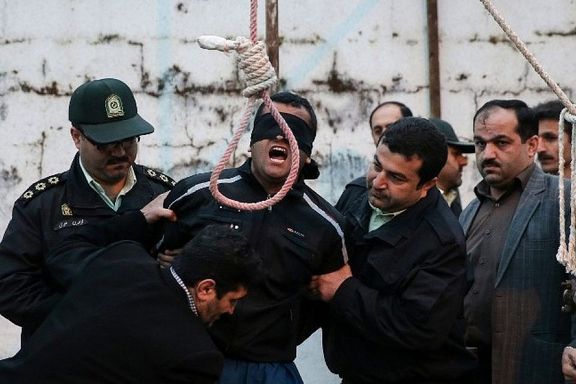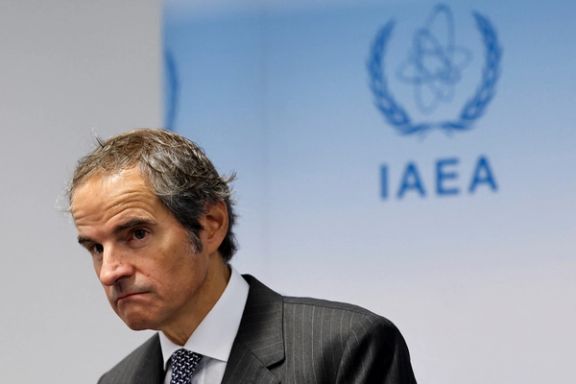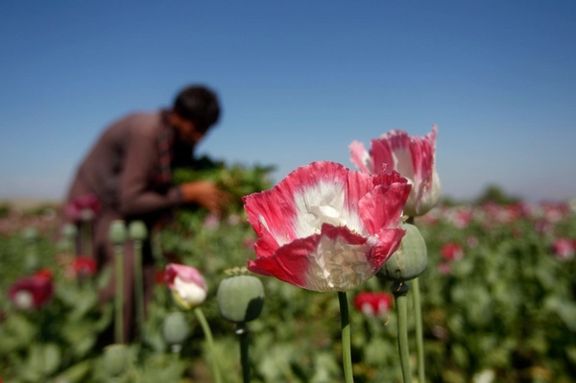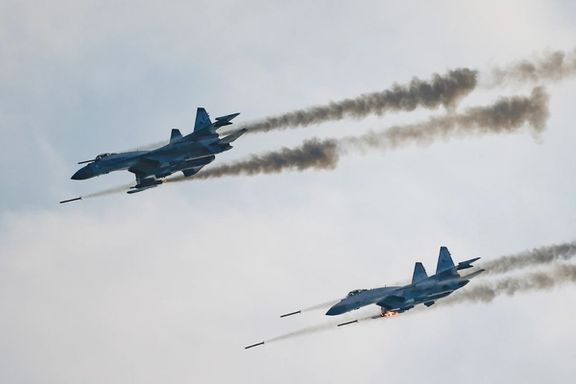Iran's Killing Spree Continues Amid Global Outcry

An Iranian prisoner accused of the murder of an IRGC Basij member in 2019 was executed on Tuesday as the regime's killing spree continues.

An Iranian prisoner accused of the murder of an IRGC Basij member in 2019 was executed on Tuesday as the regime's killing spree continues.
Saleh Mottahari-Rad, the legal and parliamentary affairs deputy of the provincial law enforcement commander in Khuzestan province, made the announcement regarding the execution.
According to Mottahari-Rad, the prisoner was accused of killing an officer named Yaser Sepidrou and a Basij militia member named Mohammad Ali Kazemi.
The incident reportedly occurred on December 3, 2019, in Shadegan county and according to media outlets the convict was apprehended on the spot for the murder charge, but the location of the execution has not been disclosed.
Local media have refrained from disclosing the name and identity of the executed person.
Simultaneously, the execution sentence of at least three other inmates—Hamid Bakhshayesh, Eqbal Fat’hollahi, and Mohsen Amrayi—was carried out in Ghezel Hesar Prison in Karaj. The three individuals were sentenced to death on charges related to drug offenses.
In mid-November, both the UN Human Rights Committee and Antonio Guterres, the Secretary-General of the United Nations, expressed concerns in separate statements about the accelerated implementation of death sentences in Iran. The UN Human Rights Committee's report emphasized the severity of executions in Iran, covering charges related to drug crimes and insulting the government and religion.
On November 2, the UN published a report stating that the Islamic Republic executed at least 419 individuals in the first seven months of the current year. This figure represents a 30% increase compared to the same period in 2022.

The UN nuclear watchdog claims Iran is not fulfilling commitments and there is no progress ahead, yet no resolution was issued at the body’s key summit.
Washington and its European allies did not move to censure Iran at the critical meeting of the International Atomic Energy Agency (IAEA) in Vienna from November 20 to 24 while Tehran is enriching uranium at levels with no non-military use and is stockpiling more of it.
After the previous round of the 35-nation IAEA Board of Governors meeting in September, the Islamic Republic ejected one-third of the inspectors with expertise in uranium enrichment. And each time the board issued resolutions as the IAEA decided it is “essential and urgent” that Iran act to fulfil its legal obligations and clarify all outstanding safeguards issues without delay, Iran responded by augmenting activities.
Iran has steadily leveled up its nuclear game since 2021, developing more plants, enriching more uranium at higher levels, stockpiling more, and simultaneously eroding IAEA monitoring. The latest IAEA report said Iran has enough uranium enriched to up to 60% for three atom bombs and is still stonewalling the agency on key issues, with IAEA Director General Rafael Grossi highlighting that “significant safeguards issues remain outstanding" in Iran’s nuclear program. Experts say analyzing IAEA recent reports proves that Iran now has enough enriched uranium to produce weapons-grade uranium (WGU) for one nuclear weapon in as little as seven days and up to 12 nuclear weapons in five months.

"If Iran fails to implement the essential and urgent actions contained in the November 2022 Resolution and the 4th March Joint Statement in full, the Board will have to be prepared to take further action in support of the (IAEA) Secretariat to hold Iran accountable in the future, including the possibility of a resolution," Britain, France, Germany -- the so-called E3 -- and the US warned in September. Since the last resolution last November, the West has refrained from formally condemning Tehran's progress or setting a deadline for Iran to come into compliance with a five-year IAEA investigation into Iran's violations of the Nuclear Non-Proliferation Treaty (NPT).
Andrea Stricker, a research fellow at the Foundation for Defense of Democracies (FDD), has called on the West to push back Iran’s nuclear advances, asking, “How many inspectors must Iran eject and how many nuclear weapons’ worth of uranium will Tehran amass before the West stands up to the regime? The current approach ensures Iran can stroll to nuclear weapons at a time of its choosing.”
Pointing out Iran’s destabilizing activities, Anthony Ruggiero, Senior Director of FDD’s Nonproliferation Program said, “Tehran funds and supports proxies attacking Israel and is on the threshold of nuclear weapons. President Biden should call for a special IAEA board meeting to censure Iran and support the IAEA’s director general. Washington must fully implement US sanctions and respond to Tehran’s proxies attacking US troops by targeting Iranian personnel responsible for the attacks.”
There is bipartisan consensus at US Congress that a nuclear Iran is unacceptable, but no measure did manage to slow down Tehran’s nuclear drive.
It seems that some of world leaders have come to terms with a nuclear Iran and its hypothetical atomic bombs, and apparently a dozen more states that are at the verge of going nuclear. During the World Nuclear Exhibition in Paris on Tuesday, Grossi said, "We already have 10 countries which have entered the decision phase (to build nuclear power plants) and 17 others which are in the evaluation process. There will be a dozen or 13 (new) nuclear countries within a few years.” Producing electricity also gave birth to Iran’s nuclear program.

Iran has rejected the recent United Nations report that claims a 95% reduction in opium production in Afghanistan.
The UN report published on November 5 suggests that the Taliban's ban on drugs in Afghanistan led to a significant drop in opium poppy cultivation while data from the body last year suggested Afghan farmers' income tripled.
Amir Abbas Lotfi, the Director General of the International Relations Office of the Drug Control Headquarters in Iran, contradicted the UN findings, stating that not only did Afghanistan decrease opium production, but it also expanded the production of psychotropic substances despite the ban imposed by the Taliban.
Lotfi pointed to another UN report from last year, highlighting that the income of Afghan farmers had tripled suddenly, reaching over $4 billion.
"Traditional drug trafficking, such as opium and psychotropic substances, from Afghanistan to Iran is still occurring," he said.
Iran, often recognized as a significant global conduit for drug trafficking to European markets, is allegedly implicated in these activities, with accusations of involvement by the Islamic Revolutionary Guard Corps (IRGC). Reports from Western and regional intelligence agencies suggest that the Islamic Republic, along with its paramilitary partners, plays a notable role in drug trafficking networks operating in the Middle East and the West.
Investigations indicate a notable increase in the transfer of large narcotics shipments from Iran to Arab countries, Southeast Asia, and Europe. However, Iranian authorities place the blame on Western governments.

Amid burgeoning ties, Iran's deputy defense minister has announced the purchase of the advanced Sukhoi-35 fighter jet amongst its latest arms deal with Moscow.
Mehdi Farahi told IRGC-affiliated Tasnim news agency on Tuesday that Iran anticipates the delivery of the Mil Mi-28 attack helicopter, Sukhoi-35 fighter jet, and Yak-130 training aircraft imminently as the regime ramps up its supplies from the fellow sanctioned nation.
As of now, Russian authorities have not commented on the latest deal which gives it access to some of Russia's most sought-after technology. Moscow's invasion of Ukraine and its heightened need for weapons, particularly drones, has led to a deepening of ties between the two nations keen to ramp up their military capabilities in the face of global sanctions.
Iran's pursuit of the Russian Sukhoi-35 stems from its perception as a formidable rival to the American F-35. Given the aging fleet of fighter jets, many acquired during the reign of the Shah, the acquisition signals a potential modernization of Iran's air force.
Contradictory statements regarding the acquisition process have become a recurrent theme in Iran's discourse. In June, Air Force Commander Hamid Vahedi expressed the necessity for the Sukhoi-35 but remained uncertain about its deployment timeline.
A month later, the Defense Minister under President Ebrahim Raisi indirectly acknowledged disruptions in the fighter jet purchase contract. Mohammadreza Ashtiani, responding to queries about the Sukhoi-35 acquisition, hinted that the capability for domestic production played a role in the decision.
Speculation surrounding potential disruptions in military cooperation between Russia and Iran has surfaced, with some suggesting that Israel may have influenced Russia to postpone the delivery of the advanced fighter jets.

In an effort to bolster revenue, the Iranian government has identified 110,000 luxury homes to tax, cracking down on the country's affluent homeowners.
According to the annual tax law, properties exceeding 400,000 USD value face a two per thousand tax on the excess value, with municipalities mandated to report property status to the Tax Affairs Organization.
Notably, residential units and villas under construction are exempt from this tax, and in cases of ownership transfer, the luxury home tax responsibility falls on the original owner starting from the Iranian New Year on March 21.
The government claims the objective in taxing vacant luxury homes is to discourage owners, not dependent on them for income, from keeping these properties empty to demand rents or sale prices higher than market values.
However, the move has sparked criticism, with some attributing it to the government's financial constraints due to sanctions and low oil revenues. Critics argue that the government is resorting to extracting more money from citizens, as they face a large budget deficit.
The amount of the Iranian government debts has increased about 900-fold over the past decade to $60 billion. This would be as much as 850 million barrels, or two years’ worth of oil exports at normal market prices.
Iran's economy, where 80% is directly or indirectly controlled by the government or semi-official entities, has faced challenges despite a privatization drive initiated 15 years ago. The effort has, in some cases, resulted in the creation of quasi-governmental firms controlled by influential figures, limiting competition and relying on public funds to sustain operations.

Two Iranian tourism professionals have been arrested in Esfahan province for “violating hijab regulations.”
Niloufar Ghazaleh and her husband, Mohammad Ali Moghimi, were taken into custody on Monday under the orders of the judge of Khur and Biabanak county court.
Approximately a month ago, Ghazaleh had received a five-year imprisonment sentence for what authorities termed "publishing photos without hijab." The couple's guest house has been sealed for over a month under the same judge's directive.
Reports indicate that numerous tourist accommodations in the city of Khur, recognized as the Mesr Tourism Zone, have been shut down in recent months, ostensibly due to visitors not adhering to hijab.
Local witnesses suggest that, following the judge's order, law enforcement has closed down all previously thriving tourism-related businesses in the area.
Activities such as entering tourist sites without permission, conducting body inspections by undressing tourists, and scrutinizing the contents of tourists' mobile phones are among the measures carried out by the police in the region.
In September, Esmail Barat, Deputy for Supervision and Evaluation of Tourism Services in the country, revealed that, over the past year, 77 tourism units nationwide, including hotels, eco-lodges, traditional restaurants, and roadside centers, have been sealed due to "failure to observe norms and hijab."
Moreover, in July, disturbing images and news emerged of an attack by approximately 30 IRGC forces in uniforms and military vehicles on tourists residing in tents in the mountainous region of Opart, bordering Semnan and Mazandaran. The victims were reportedly subjected to beatings with batons and shockers.
A few days after the incident, the news website Rouydad 24 reported that the spokesperson for the Semnan governorate insisted that the Islamic Revolutionary Guard Corps should be held accountable for the assault.